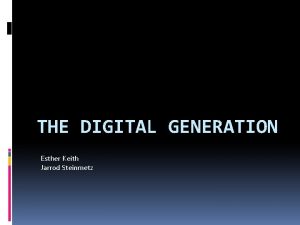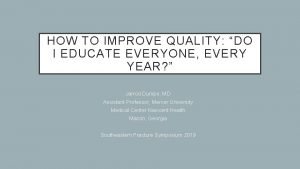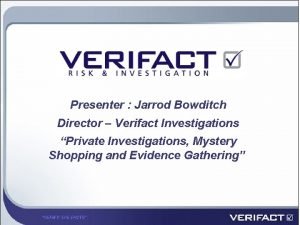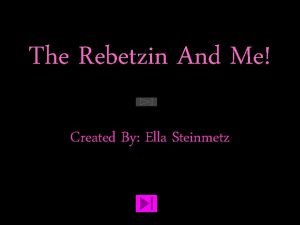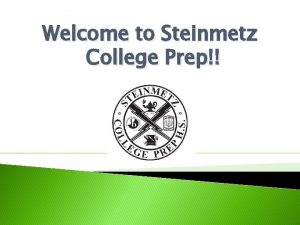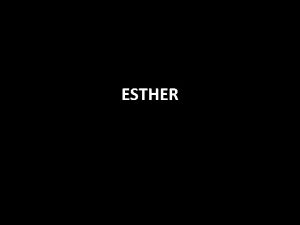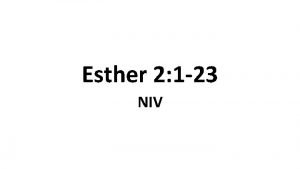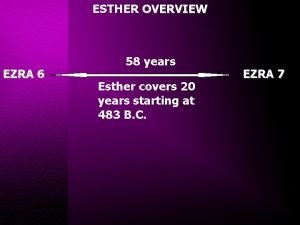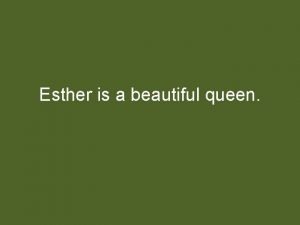THE DIGITAL GENERATION Esther Keith Jarrod Steinmetz Who


















- Slides: 18

THE DIGITAL GENERATION Esther Keith Jarrod Steinmetz

Who are they?

Who are they? • Digital natives and the Net generation (Bittman et al, 2011) • Natural aptitude to technology • Proficient at using it • Never been in a world without it

Who are they? • Highly connected • Want quick access to information • Want customization • Able to process parallel sources of information (Contreras et al, 2011).

Who are they? • Millennials • Have “never experienced a ‘pre-digital’ world” (Jones et al , 2010)

Supporters Photo Credit: Brad Flickinger; http: //www. flickr. com/photos/561554 76@N 08/5326220628/ “Generation Gap” (Buckingham, 2006) Stereotypes: (Carlson, 2005) Smart Impatient Tech Savvy Multitasking Want to choose what kind of education they receive including how and where they learn. Technology has impacted how people learn. (Ransdell, 2008) Photo Credit: Quinn Dombrowski; http: //www. flickr. com/photos/quinnanya/328601

Skeptics “Digital Generation” = over-simplified (Jones et al, 2010) Digital Natives & Immigrants

Skeptics Created because of “elite” up-bringing (Brown et al, 2010) Photo Credit: Genta Masuda http: //www. flickr. com/photos/gnt/3518267115/

Skeptics Age range is not set.

Skeptics Does technology control instruction or do instructors control technology?

Which point stands out the most?

Impact of Technology on Instruction Photo Credit: Jay Yohe http: //www. flickr. com/photos/yohe/405027936/

Differentiated Instruction Photo Credit: Rich Johnson http: //www. flickr. com/photos/richjohnsonphoto/6256185600

Examples Wikis (Boulos) Blogs Podcasts Video Games E-Books (Siegle) Digital Cameras (Tartar) Video Games can: • Activate prior learning • Provide context • Offer feedback and assessment • Foster transfer of information • Foster experimentation • Encourage social interactions (Oblinger, 2004) Photo Credits: wikipedia. com; B 2 B Blog (b 2 bsocialmediaguide. com), podcast. casaforchildren. org, Fujifilm (digitalcamera. blogspot. com)

Our Response: Don’t assume too much. Expectations on Teachers. Photo Credit: College. Degrees 360 http: //www. flickr. com/photos/83633410@N 07/765829876 8/

Purposeful Integration Preparation for Work Force Interact to Learn

References Bittman, M. , Rutherford, L. , Brown, J. , & Unsworth, L. (2011). Digital natives? New and old media and children's outcomes. Australian Journal of Education , 55(2), 161 -175. Boulos, M. , Maramba, I. , & Wheeler, S. (2006). Wikis, blogs and podcasts: a new generation of Web-based tools for virtual collaborative clinical practice and education. BMC Medical Education, 6: 41. Retrieved July 10, 2012, from http: //www. ncbi. nlm. nih. gov/pmc/articles/PMC 1564136/ Brown, C. & Czerniewicz, L. (2010). Debunking the 'digital native': beyond digital apartheid, towards digital democracy. Journal of Computer Assisted Learning, 26(5), 357 -369. Doi: 10. 1111/j. 1365 -2729. 2010. 00369. x. Buckingham, D. , & Willett, R. (2006). Is there a Digital Generation? . Digital Generations: Children, Young People and New Media. Mahwah, NJ: Lawrence Erlbaum Associates. Carlson, S. (2005). The net generation goes to college. The Chronicle of Higher Education, 52(7). Retrieved July 10, 2012, from http: //www. msmc. la. edu/include/learning_resources/todays_learner/The_N et_Generation. pdf

Contreras, D, Meyer, E, Salinas, A, & Sánchez, J. (2011). Does the New Digital Generation of Learners Exist? A Qualitative Study. British Journal of Educational Technology, 42 (4), 543 -556. doi: 10. 1111/j. 14678535. 2010. 01069. x Jones, C & Czerniewicz, L. (2010). Describing or debunking? The net generation and digital natives. Journal of Computer Assisted Learning, 26 (5), 317 -320. Doi: 10. 1111/j. 1365 -2729. 2010. 00379. x Jones, C. & Healing, G. (2010). Net generation students: agency and choice and the new technologies. Journal of Computer Assisted Learning, 26 (5), 344 -356. Doi: 10. 1111/j. 1365 -2729. 2010. 00370. x Oblinger, D. (2004). The next generation of educational engagement. Journal of Interactive Media in Education, 8. Retrieved July 10, 2012, from http: //jime. open. ac. uk/2004/8/oblinger Ransdell, S. , Kent, B. , Gaillard-Kenney, S. , & Long, J. (2011). Digital immigrants fare better than digital natives due to social reliance. British Journal of Education Technology, 42(6), 931 -938. Siegle, D. (2012). Embracing e-Books: Increasing students’ motivation to read and write. Gifted Child Today, 35(2), 137 -143. Tatar, D. , & Robinson, M. (2003). Use of the Digital Camera to Increase Student Interest and Learning in High School Biology. Journal of Science Education and Technology, 12(2), 89 -95.
 Keith steinmetz
Keith steinmetz Jarrod conroy
Jarrod conroy Jarrod roark
Jarrod roark Jarrod dumpe md
Jarrod dumpe md Jarrod bowditch
Jarrod bowditch Dieter steinmetz
Dieter steinmetz Cifra di perdita
Cifra di perdita Dieter steinmetz
Dieter steinmetz Ella steinmetz
Ella steinmetz Hugh heftner
Hugh heftner Amy steinmetz
Amy steinmetz Steinmetz uniform
Steinmetz uniform You're good and your mercy is forever
You're good and your mercy is forever Second generation vs first generation antipsychotics
Second generation vs first generation antipsychotics Next-generation digital services
Next-generation digital services Næste generation digital post
Næste generation digital post Lp html
Lp html Hệ hô hấp
Hệ hô hấp Số nguyên tố là
Số nguyên tố là
